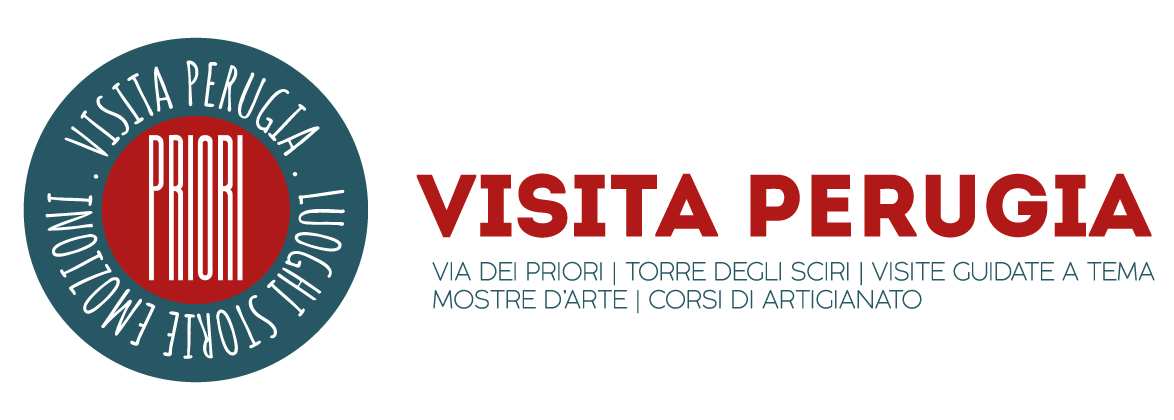
Historic districts and city gates. Perugia is characterized by the presence of walls, still observable today, dating back to different historical periods: the oldest erected in Etruscan times and surrounded the city, extending for about 3 km; the most recent date back to the medieval period, when the territorial expansion of the city led to the need for a new ring, about 5 km long. This new wall encompassed the 5 wards that had been built over time near the doors of the ancient Etruscan walls and that take their names from them. An interesting curiosity is given by the distribution of the 5 wards, they are in fact connected to the Piazza Grande (Piazza IV Novembre) through some paths, the so-called royal routes, according to a layout that recalls the tips of a star.
Saint Susanna Gate. Like the other four royal streets of Perugia, also Via Dei Priori (the fifth), thanks to its splendid Porta Trasimena, crosses the Etruscan walls of the city, inserting itself with its decumanus in the longest and most evocative heart of the Acropolis. It does so in a stretch of the ancient route particularly dense with environmental and monumental qualities. The district that underlies it, in fact, extends from the Conca area, involving the Verzaro Gardens near the Department of Letters of the Italian University, to the center of the deep and evocative ditch of the Cupa that delimits the border with the District of Porta Eburnea. Among these extremes, Piazza San Francesco al Prato, the Borgo di Porta Santa Susanna, with its homonymous Porta that is grafted in what still remains of the ancient route of the medieval walls and the Parco della Canapina, with the splendid Church of San Benedetto Vecchio. The ward takes its name from the patron saint, who appears as a symbol, in addition to the oldest bear. Then the chain, which has remained an emblem until today, took over to remind us of the barrier against enemies, as it was witnessed since 1327 in Via dei Priori. The colour is blue, also in relation to the waters of Lake Trasimeno, which can be reached from this west-facing door, along the royal road towards Cortona.
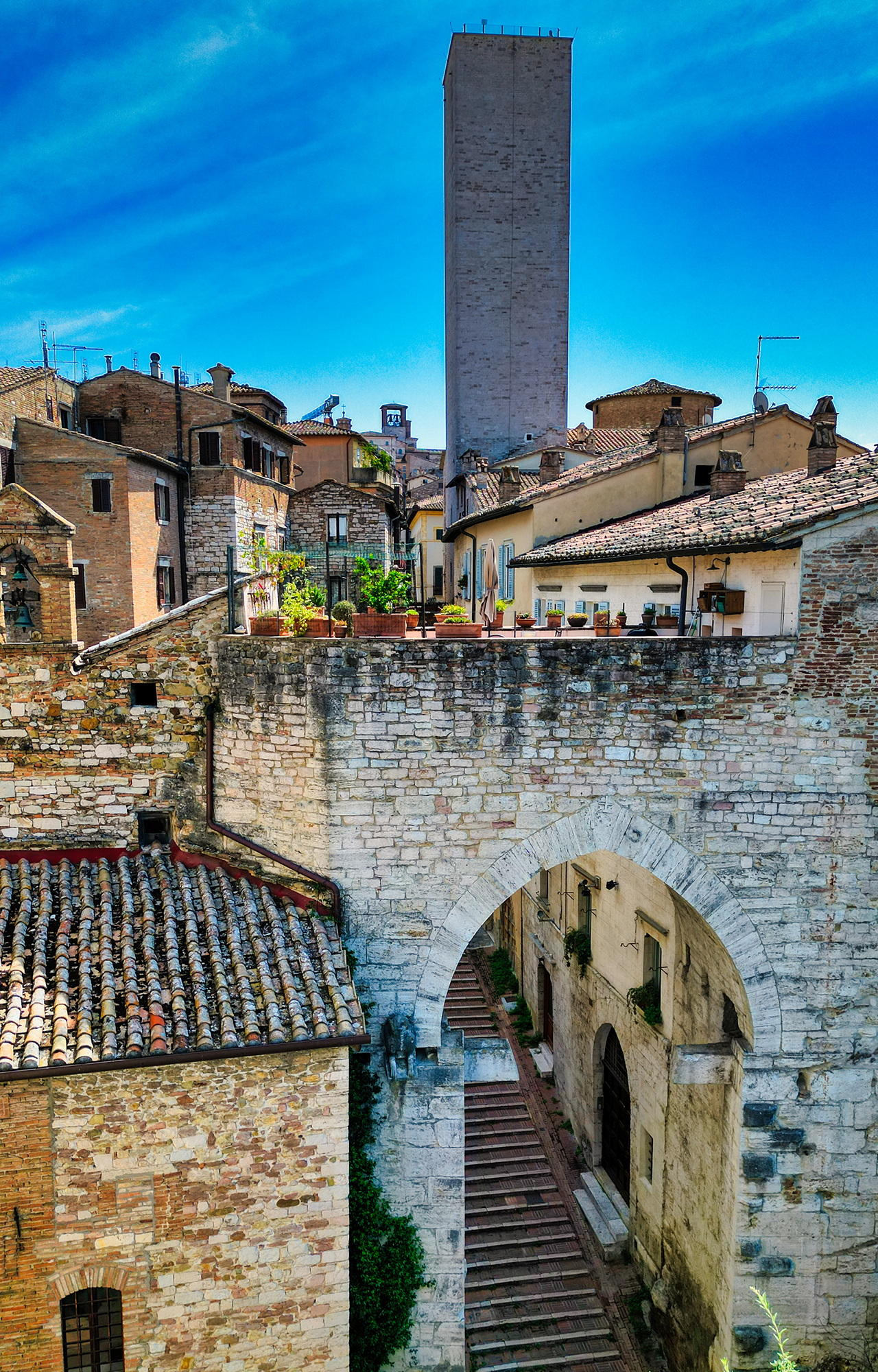
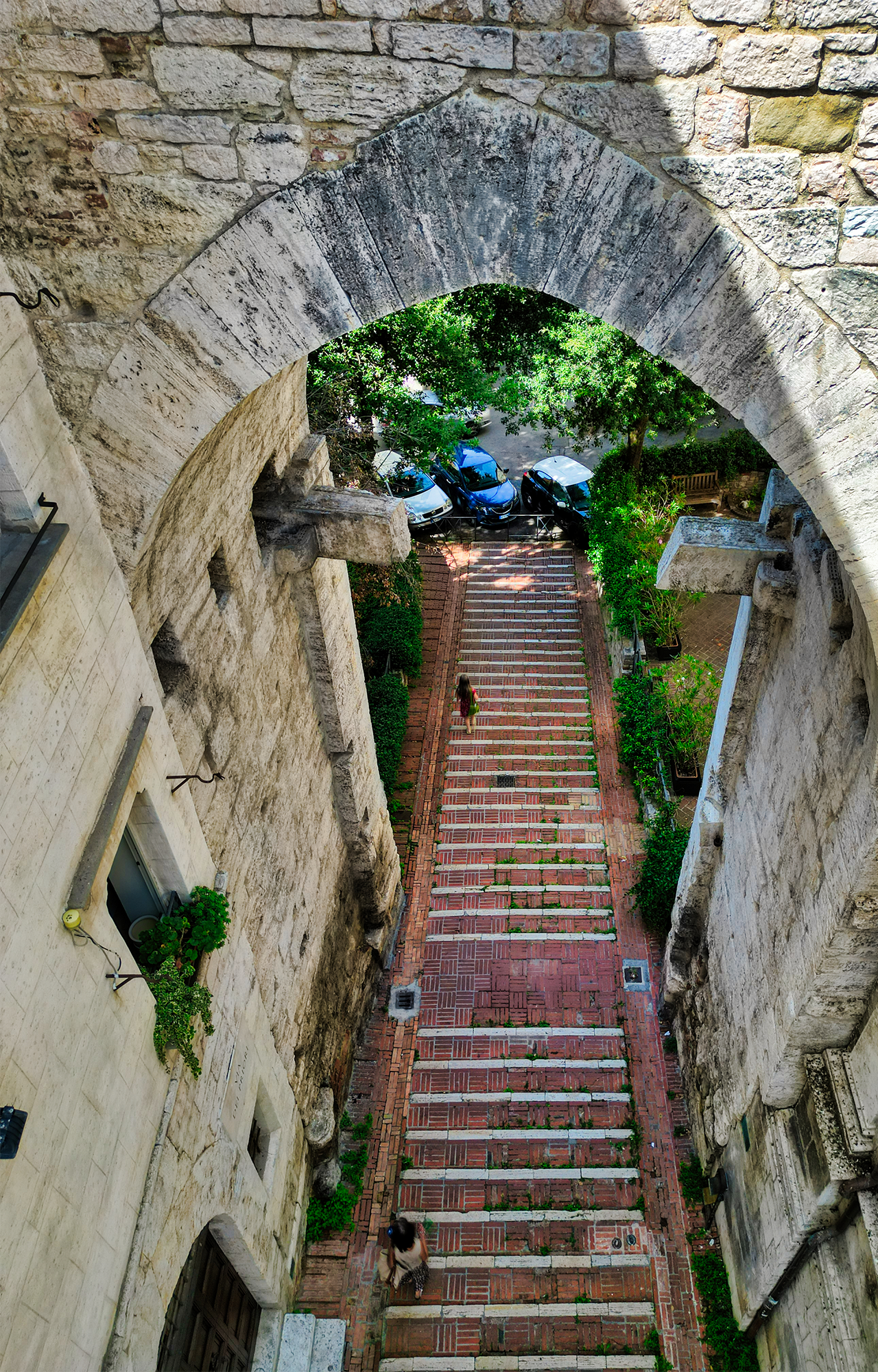
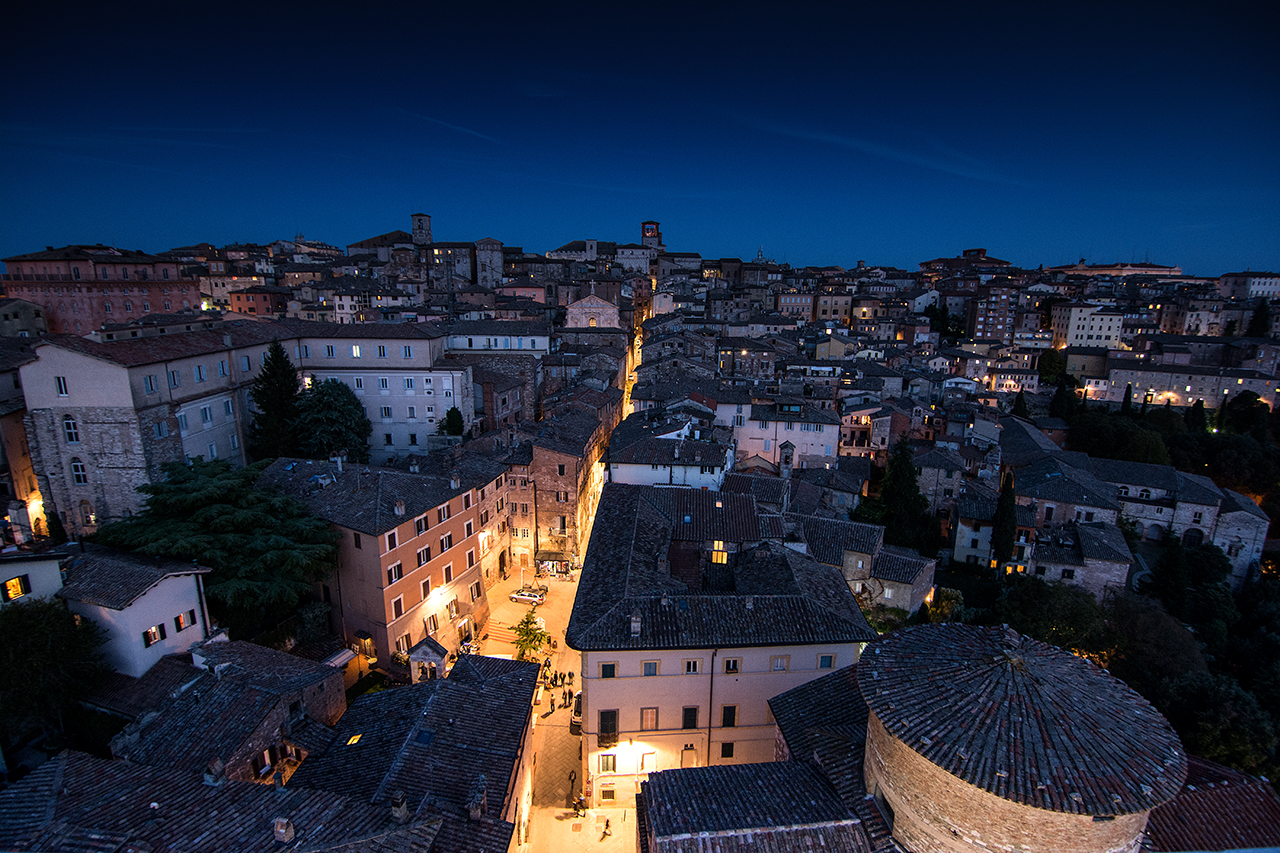
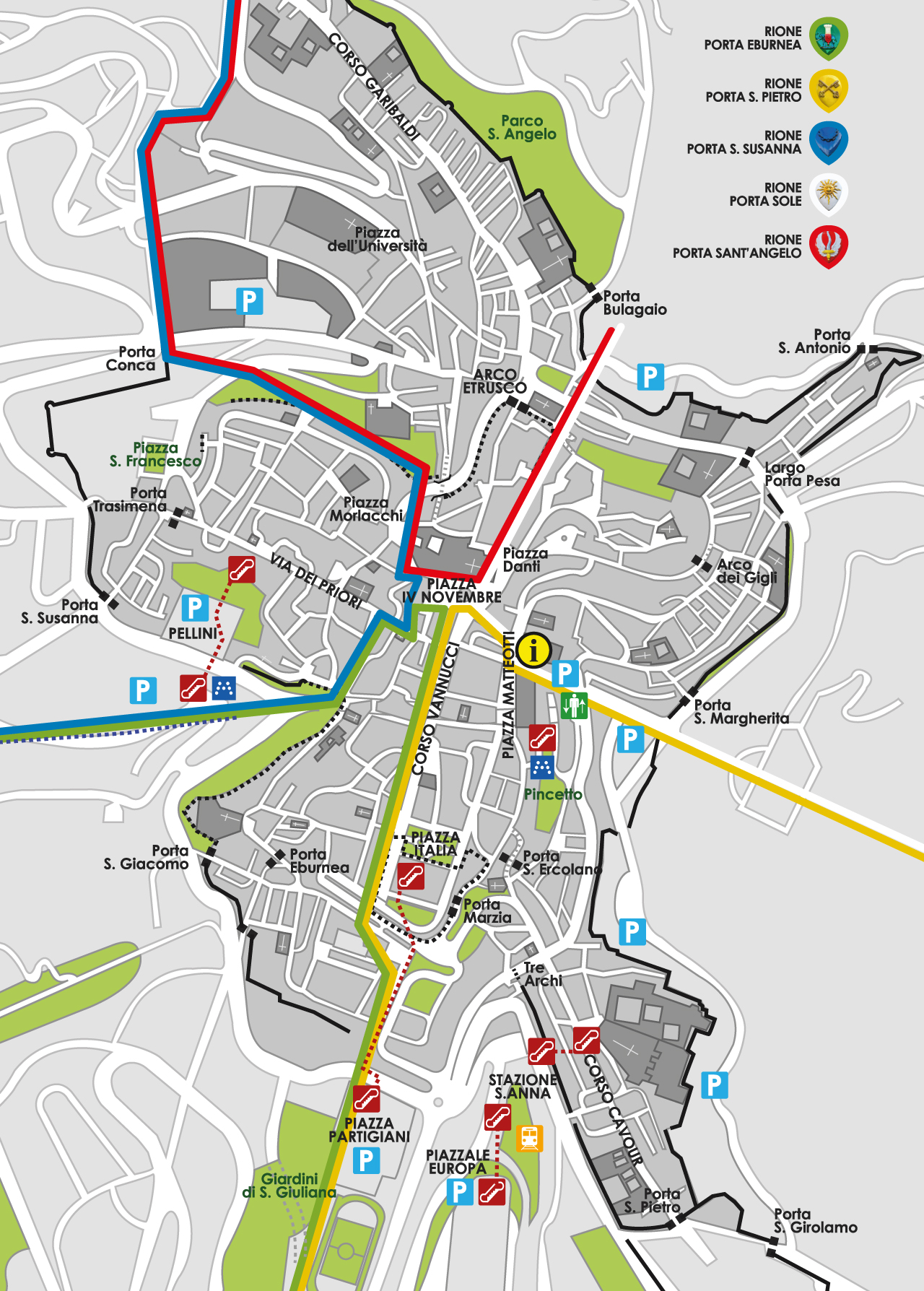
Eburnea Gate. The ward used to have as a symbol the deer, then replaced by the tower above the harnessed elephant, from which the name would derive in relation to the ivory of the tusks; the tower, a symbol of vigilance, could represent the ‘turris eburnea‘, attributed to the Virgin Mary.The patron saint is St. James, who also appeared as an emblem, in the guise of a pilgrim. The color is green, in reference, it is said, to the gardens extended along this slope, facing south. From the ward the royal road went out to Orvieto.
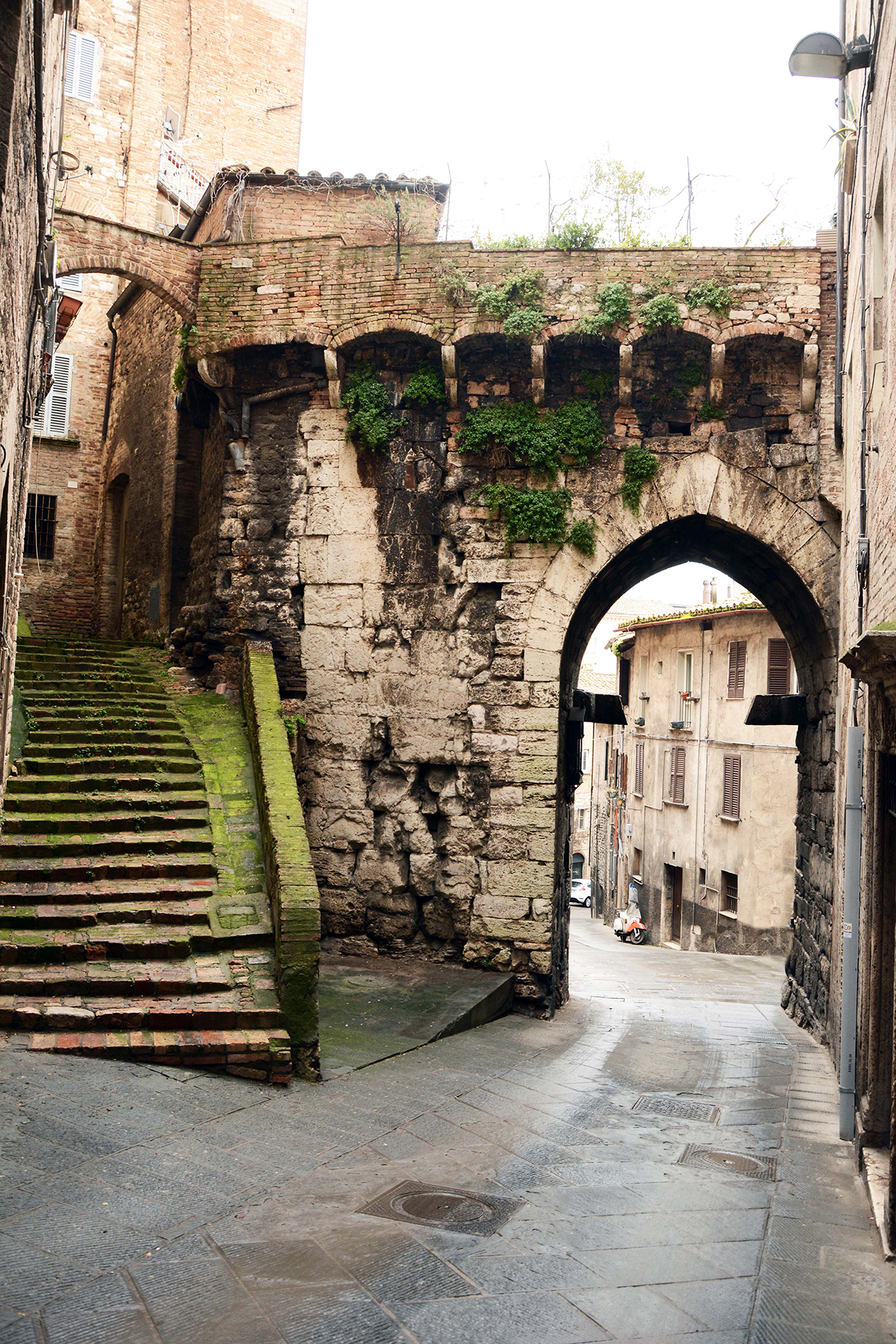
Eburnea Gate. The ward used to have as a symbol the deer, then replaced by the tower above the harnessed elephant, from which the name would derive in relation to the ivory of the tusks; the tower, a symbol of vigilance, could represent the ‘turris eburnea‘, attributed to the Virgin Mary.The patron saint is St. James, who also appeared as an emblem, in the guise of a pilgrim. The color is green, in reference, it is said, to the gardens extended along this slope, facing south. From the ward the royal road went out to Orvieto.
Sant’Angelo Gate. The name of the district derives from the ancient Temple of San Michele Arcangelo to which is also connected the coat of arms depicted by the image of the archangel or only by the two wings with the sword. The color is red, like the flaming sword of the warrior angel or the fire lit with the wood carried through this north-facing door. From here came the main road to the northern county, the Via della Lungara, currently Corso Garibaldi. The suburb developed during the thirteenth century between the Etruscan Arch and the Convent of Monteripido; despite modern transformations, it has maintained its original characteristics as a civil and religious residential area.
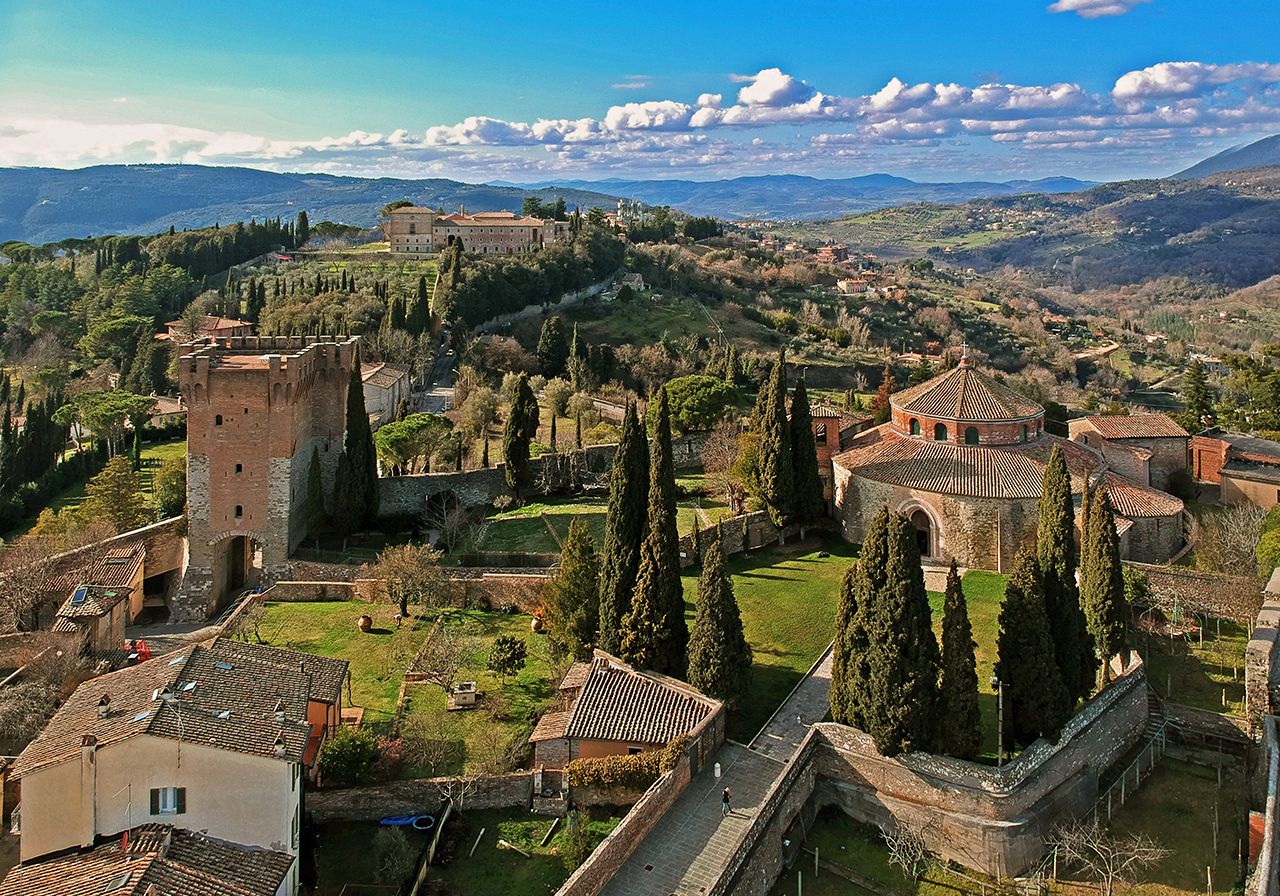
Sant’Angelo Gate. The name of the district derives from the ancient Temple of San Michele Arcangelo to which is also connected the coat of arms depicted by the image of the archangel or only by the two wings with the sword. The color is red, like the flaming sword of the warrior angel or the fire lit with the wood carried through this north-facing door. From here came the main road to the northern county, the Via della Lungara, currently Corso Garibaldi. The suburb developed during the thirteenth century between the Etruscan Arch and the Convent of Monteripido; despite modern transformations, it has maintained its original characteristics as a civil and religious residential area.
St. Peter’s Gate. The district, called Borgo Bello (due to the beauty of the Dominican and Benedictine settlements, art and greenery), oriented to the southeast, takes its name from the patron saint St. Peter. It is also a symbol of the district, together with the cross keys, while in the fourteenth century the lion and then the stone appeared, in memory of the lithomachia in use at the Battlefield (today’s Via XIV Settembre). The associated color is the yellow of the wheat that entered through the door, open on the plain of the Tiber.
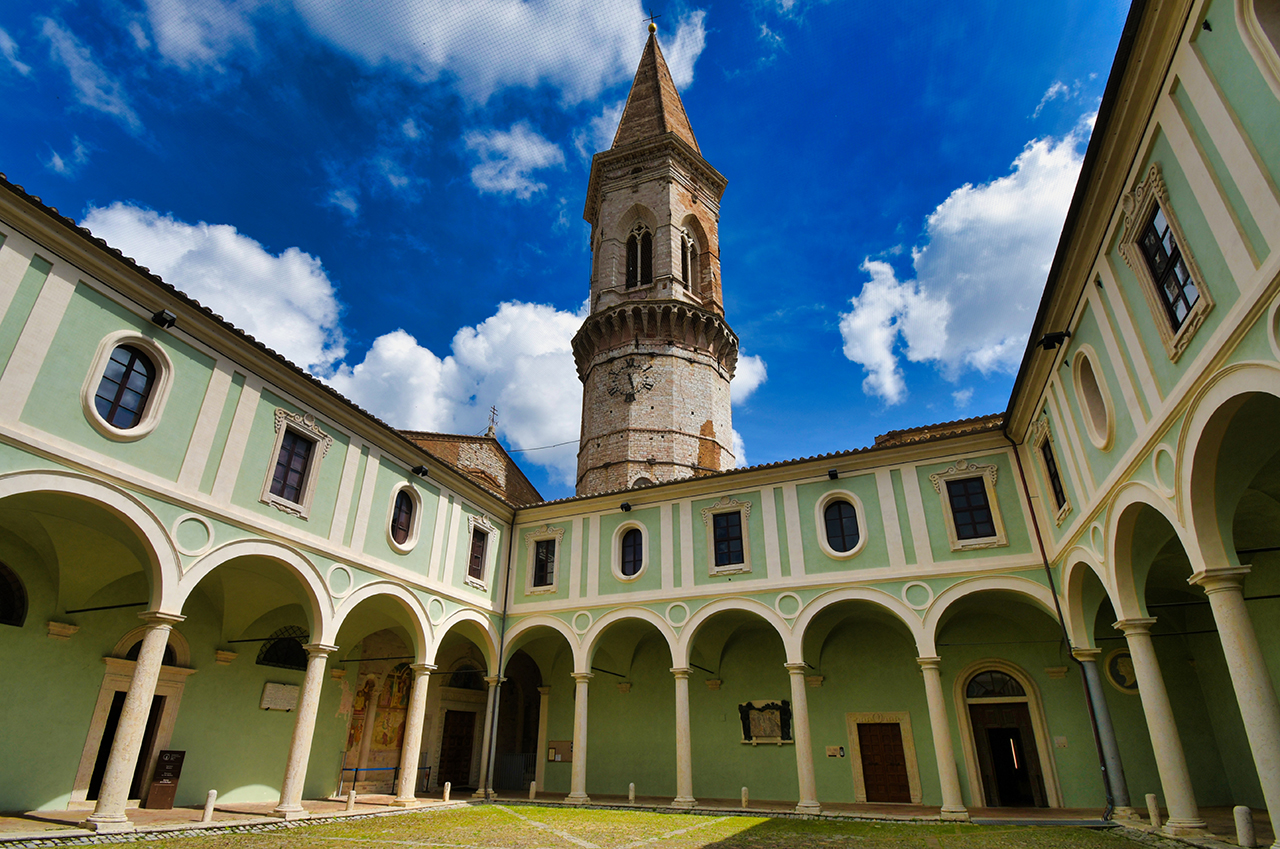
St. Peter’s Gate. The district, called Borgo Bello (due to the beauty of the Dominican and Benedictine settlements, art and greenery), oriented to the southeast, takes its name from the patron saint St. Peter. It is also a symbol of the district, together with the cross keys, while in the fourteenth century the lion and then the stone appeared, in memory of the lithomachia in use at the Battlefield (today’s Via XIV Settembre). The associated color is the yellow of the wheat that entered through the door, open on the plain of the Tiber.
Sun Gate. The symbol of the district is the sun, in relation to the topographical exposure, facing east; it is associated with the white color of the light, but also of the flour, coming from the mills on the Tiber through the royal road that started from here. The patron saint is San Romualdo, of the Camaldolesi, who shortly after the eleventh century founded a monastery on the remains of an ancient temple (the alleged Temple of the Sun) on the acropolis.
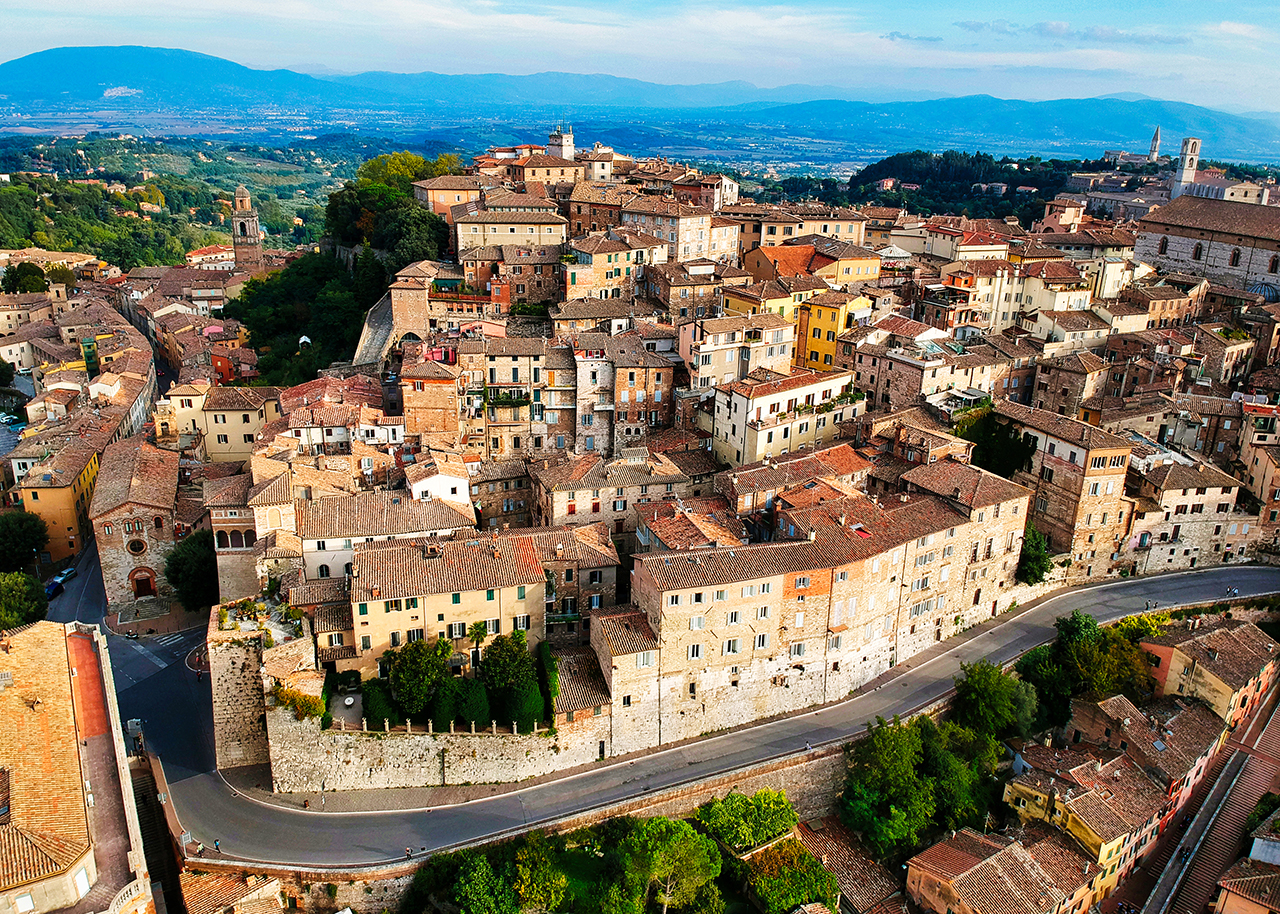
Sun Gate. The symbol of the district is the sun, in relation to the topographical exposure, facing east; it is associated with the white color of the light, but also of the flour, coming from the mills on the Tiber through the royal road that started from here. The patron saint is San Romualdo, of the Camaldolesi, who shortly after the eleventh century founded a monastery on the remains of an ancient temple (the alleged Temple of the Sun) on the acropolis.

